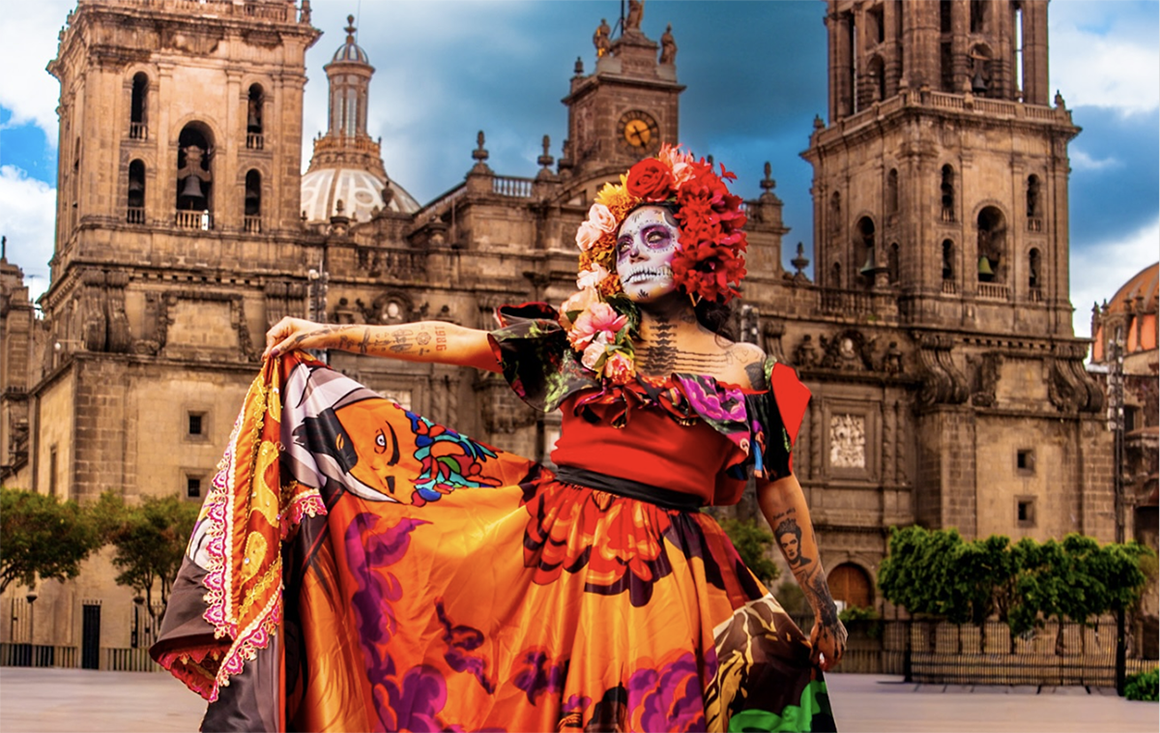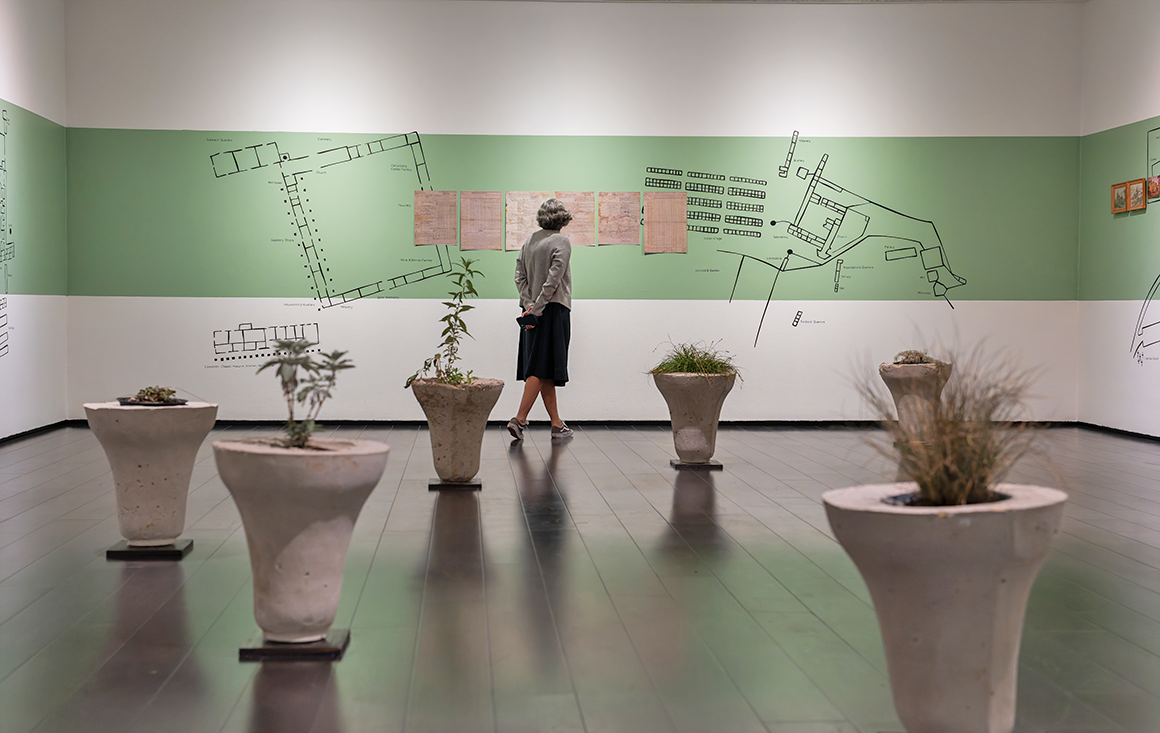A School, A Tribe, and A Deepening Partnership

On the third floor of Santa Clara University’s library, in the Norman F. Martin, S.J. Reading Room, sit the sacramental records from Mission Santa Clara de Asís—the mission that the university was later built around.
The leather-bound books are more than 200 years old and contain baptismal, marriage, and burial records for thousands of Ohlone and Muwekma Ohlone people who lived, worked, and died at the mission.
To some, these might just seem like names on a page but for members of the Muwekma Ohlone Tribe of the San Francisco Bay Area, it’s a crucial part of their history.
Though the tribe’s history in the Bay Area goes back 10,000 years, the Muwekma Ohlone tribe lost its federal recognition in the early 20th century, which affects the federal resources, like land and funding, that they can access. Being able to trace their lineage through mission records is invaluable to the tribe members who are still working to restore their federal status and affirm their tribe’s continued existence.
This summer, a group of 10 Muwekma Ohlone youths between the ages of 11 and 20 had the opportunity to explore these records, as well as a mission choir book and historical illustrations of their ancestors, for themselves.
“There were so many different emotions the first time I visited the mission archives—it was indescribable,” recalls Isabella Gomez ’27. “I was also so happy to witness how engaged my peers were. They were asking lots of questions, looking through books, and reading the names of the people who were missionized here.”
Gomez, SCU’s inaugural recipient of the Ohlone and Muwekma Ohlone Scholarship, helped organize the archive visit as part of a four-day cultural campout on SCU’s campus. Created by Gomez’s aunt, Muwekma Ohlone Vice Chairwoman Monica V. Arellano, these cultural campouts were popular within the tribe going back to the 1990s when members would gather in the nearby Sunol Wilderness Regional Preserve to participate in traditional customs and crafts, like abalone carving and weaving pine needle medallions.
The campouts stopped in the early 2000s as the tribe refocused on their fight for federal recognition, but though the tradition ended before Gomez could attend, her mother, former Muwekma Ohlone Councilwoman Gloria E. Arellano Gomez, still passed down campout memories, even 20 years later.
“It always stuck with me how important these campouts were, and when the idea came to bring them back, I knew it would be even more powerful to have the campout at Santa Clara University because it’s so connected to our homeland,” Gomez says.

Muwekma Ohlone youth exploring the mission archives at Santa Clara University's library.
A reciprocal relationship
In 2020, Amy Lueck, an associate professor in English, was consulting with the University’s Ohlone History Working Group. The group was brought together to identify and rectify gaps in indigenous historical representation across SCU’s campus.
In the wake of this group’s report, many projects were highlighted—a redesigned exhibit at the de Saisset Museum covering Ohlone history, an “Ohlone Heritage Hub” website, and a Google Earth tour of on-campus Ohlone sites that is being developed into a 3D augmented reality experience that can be accessed on a smartphone while walking around campus.
However, Lueck felt more could be done.
“It was this shift for me in thinking not just about educating the non-native public about Ohlone history, but also the ways that we could more directly serve the Ohlone community,” says Lueck.
She asked tribal representatives if they knew any Muwekma Ohlone students who might be interested in developing programs for other tribal youth. Former Councilwoman Gomez suggested her daughter—then a high school senior—who had participated in several cultural revitalization programs from a young age.
On the first day of Gomez’s internship, she suggested bringing back the cultural campout, and Lueck was immediately receptive. Both felt it was an important opportunity to not only bring scattered tribal members together, but to do so on their ancestral homeland.
“Our tribe is often giving—giving our knowledge, time, and stories,” Gomez says. “It meant a lot to see these efforts being reciprocated at Santa Clara University during my first interaction with a professor here.”

Campers used their abalone carvings in handmade beaded necklaces.
Campout memories
After a year of planning, the inaugural SCU Muwekma Ohlone campout was held over four days in July. Campers participated in a range of activities facilitated by Muwekma Ohlone and Miwok leaders and artists.
Traditional practices were intentionally connected with specific campus locations and resources, explains Lueck. For example, campers completed a scavenger hunt for indigenous plants in the Forge Garden and carved abalone shells with modern saws and tools in a lab in the Sobrato Campus for Discovery and Innovation.
“We felt it was important to infuse the traditional cultural campout with this element of college readiness, but also, it was important to recreate our institution in the image of these students,” Lueck says. “It’s one of the things that we said a couple of different times: ‘You belong here, both in spite of and because there’s a university here.’”
Making higher education feel accessible was a major goal of the program. Gomez notes many indigenous teens don’t see college as an option, especially in the Bay Area where the cost of living disproportionally affects the indigenous community. According to some studies, the simple act of visiting a college can increase admission chances by 40 percent.
But for Gomez, the campout was also a chance to experience her new university surrounded by her tribal peers. One of the most impactful moments of the campout, she says, was an impromptu group visit to the Mission Gardens, which was once part of a cemetery. Roughly 7,000 indigenous people were buried around the Mission, including Gomez’s ancestors. “For us Ohlone, we’ve never officially visited the Mission Gardens as a tribe before, so it was a big deal. I know I’m going to walk past those gardens when I go to class as a student this fall, so having the opportunity to first do that with my community was very powerful.”

Campout participants completed a scavenger hunt for indigenous plants in SCU's Forge Garden—later using them to make a traditional Ohlone salad.
“An open gate”
There’s still much work to be done in acknowledging the history of Santa Clara University and the Muwekma Ohlone, but Lueck believes the campout can serve as a model for meaningful collaboration in the future.
“This is still their homeland, and that requires something from us as an institution dedicated to social justice,” she says.
One project on the horizon involves a digital memorial that will be added to the de Saisset Museum’s Ohlone exhibit this fall. The memorial will include the names of the indigenous people who died at the mission, as well as biographical details and contemporary context from current Muwekma Ohlone tribe members.
Gomez hopes that projects like these will help inspire her fellow Broncos to learn more about the history of the land they study and live on. This knowledge, she says, is tied to respect—for the land, for its history, for the people who have passed, and for their descendants.
As the first recipient of the Ohlone and Muwekma Ohlone Scholarship, she wants to use her education at SCU to continue fighting for indigenous representation and rights, not just at this university, but also in her post-grad life, where she hopes to work in American Indian law or the nonprofit world.
“Receiving this scholarship doesn’t end with me. It’s a form of healing for our community and it represents an open gate for all Ohlone youth.”
This endowed scholarship will support indigenous undergraduate students with a preference for those who identify with the Ohlone and Muwekma Ohlone community and demonstrate financial need.


